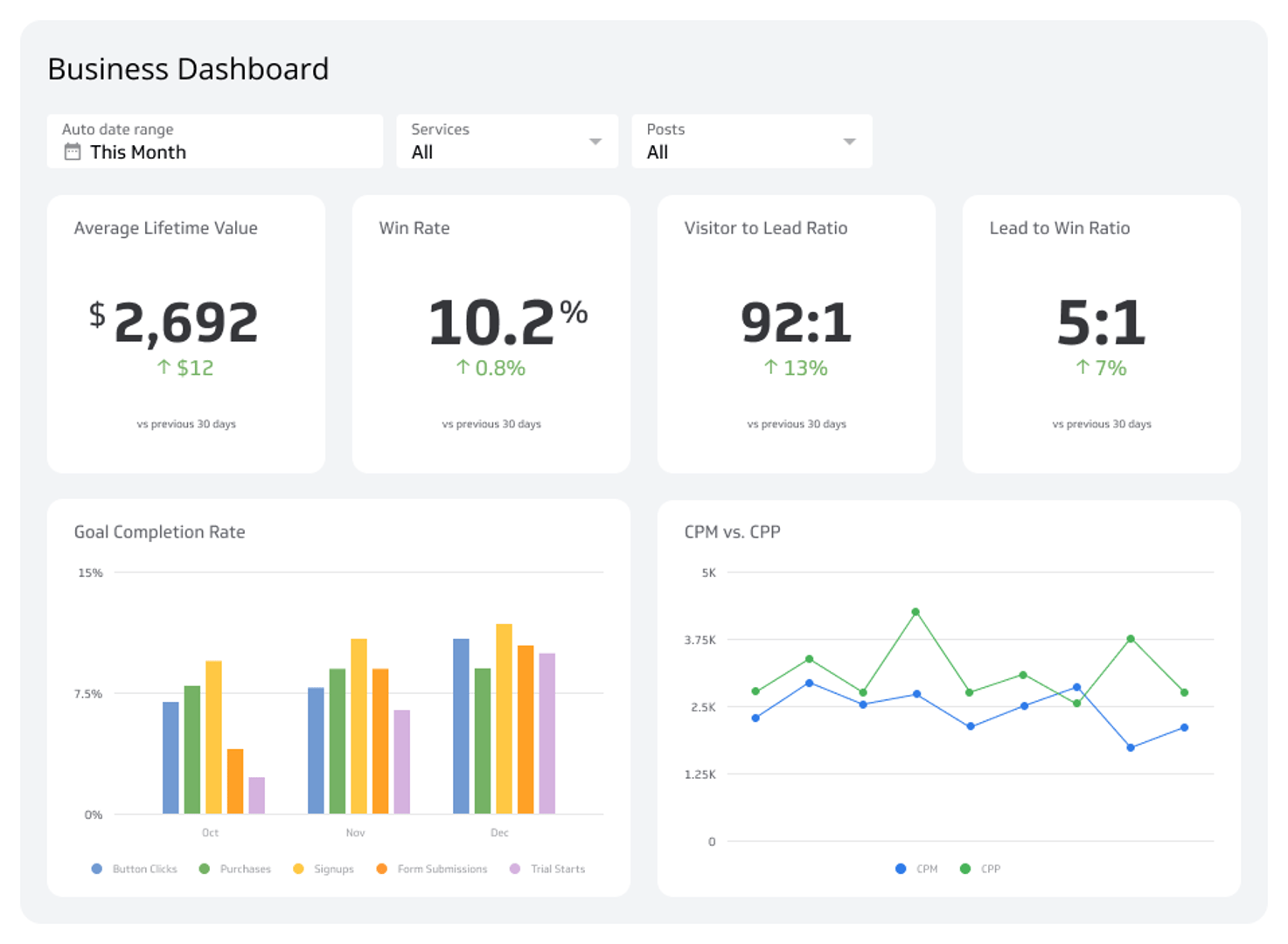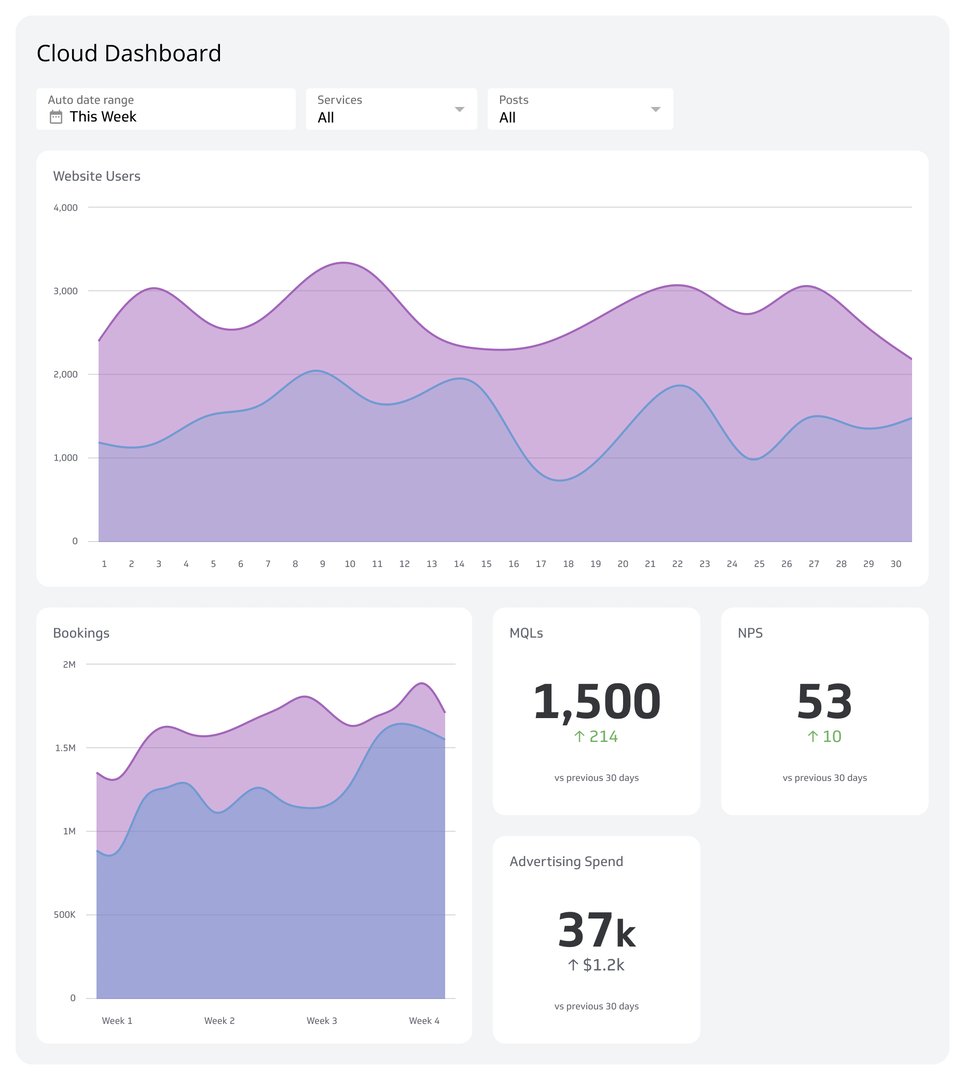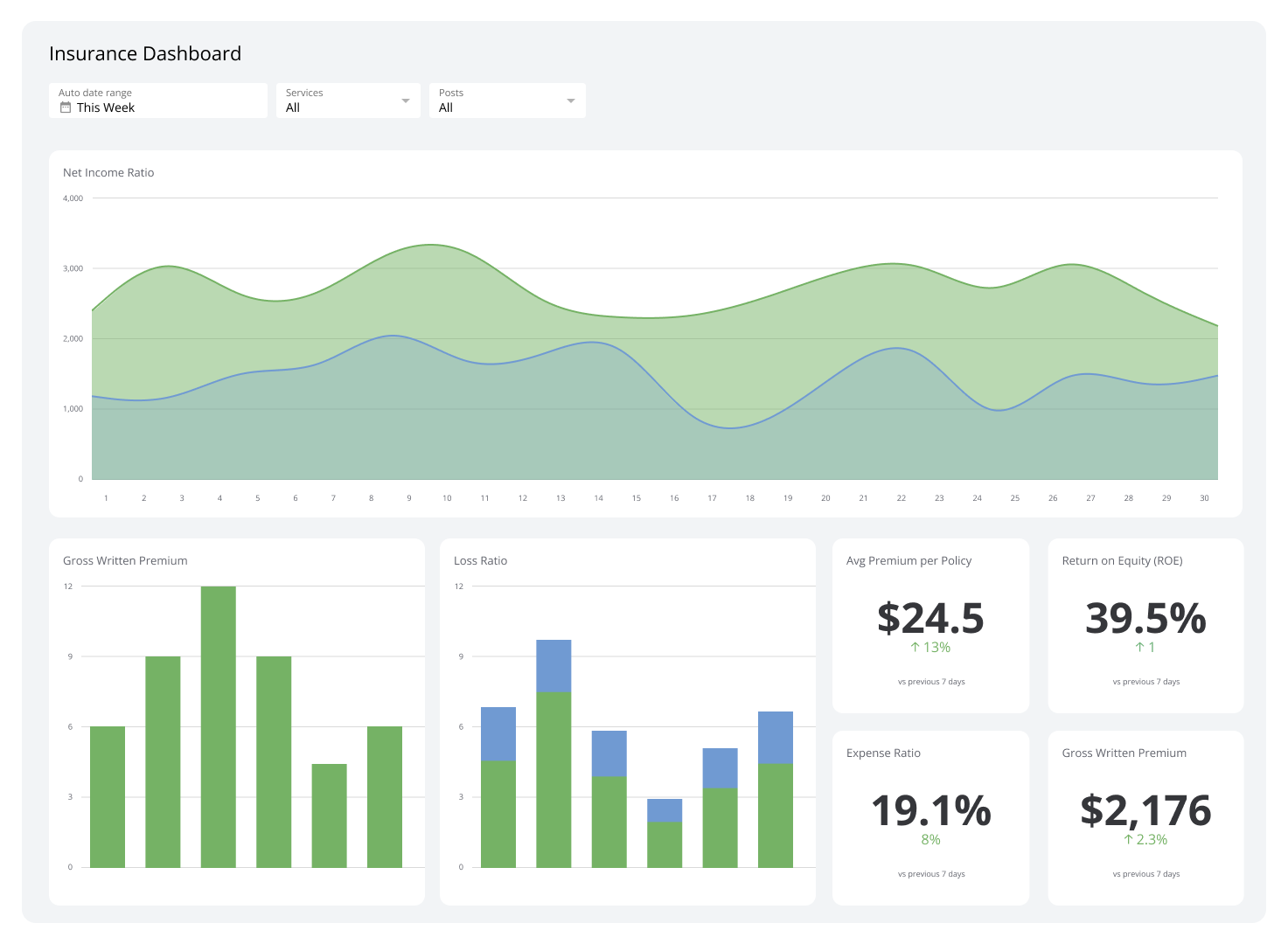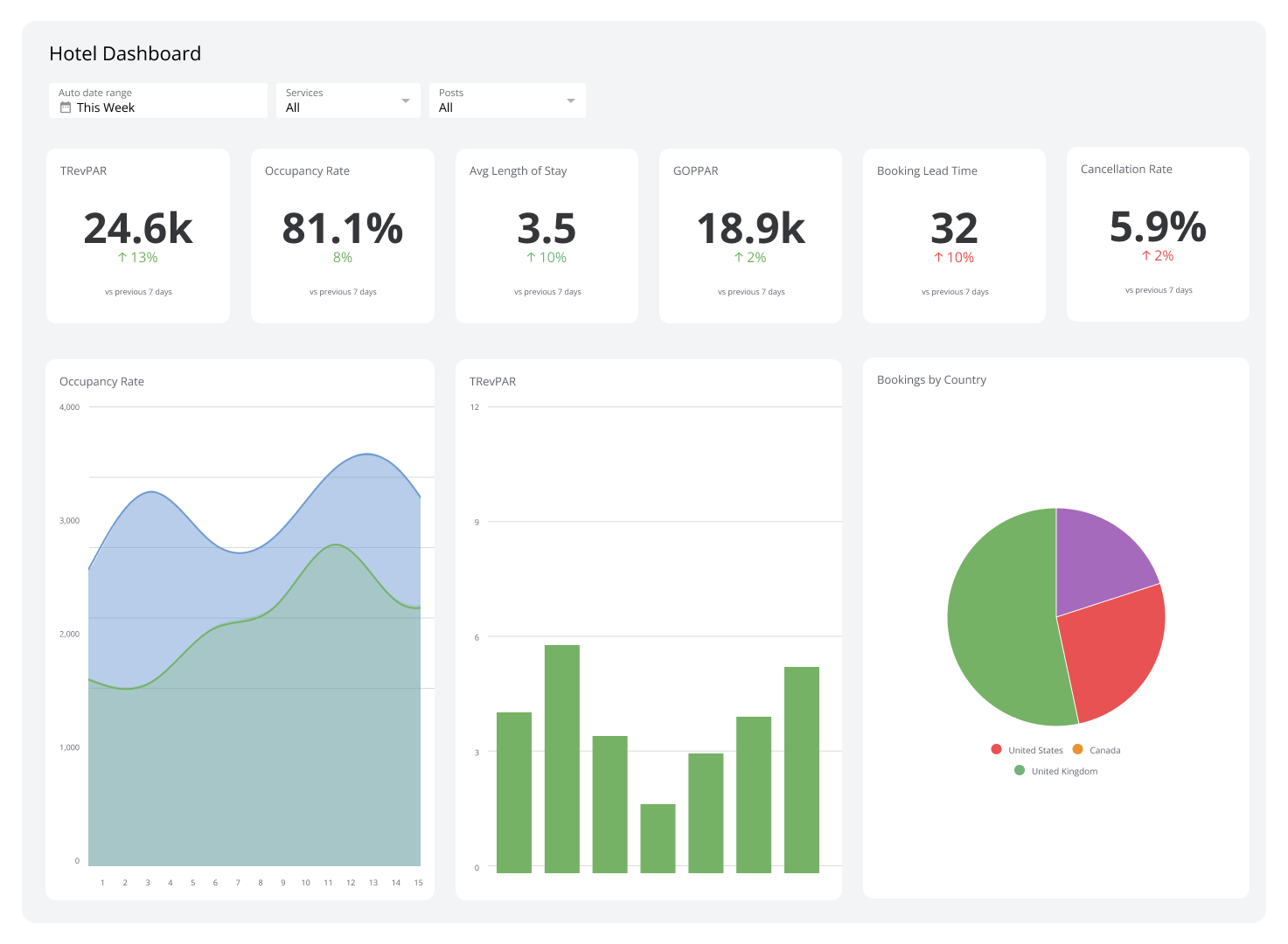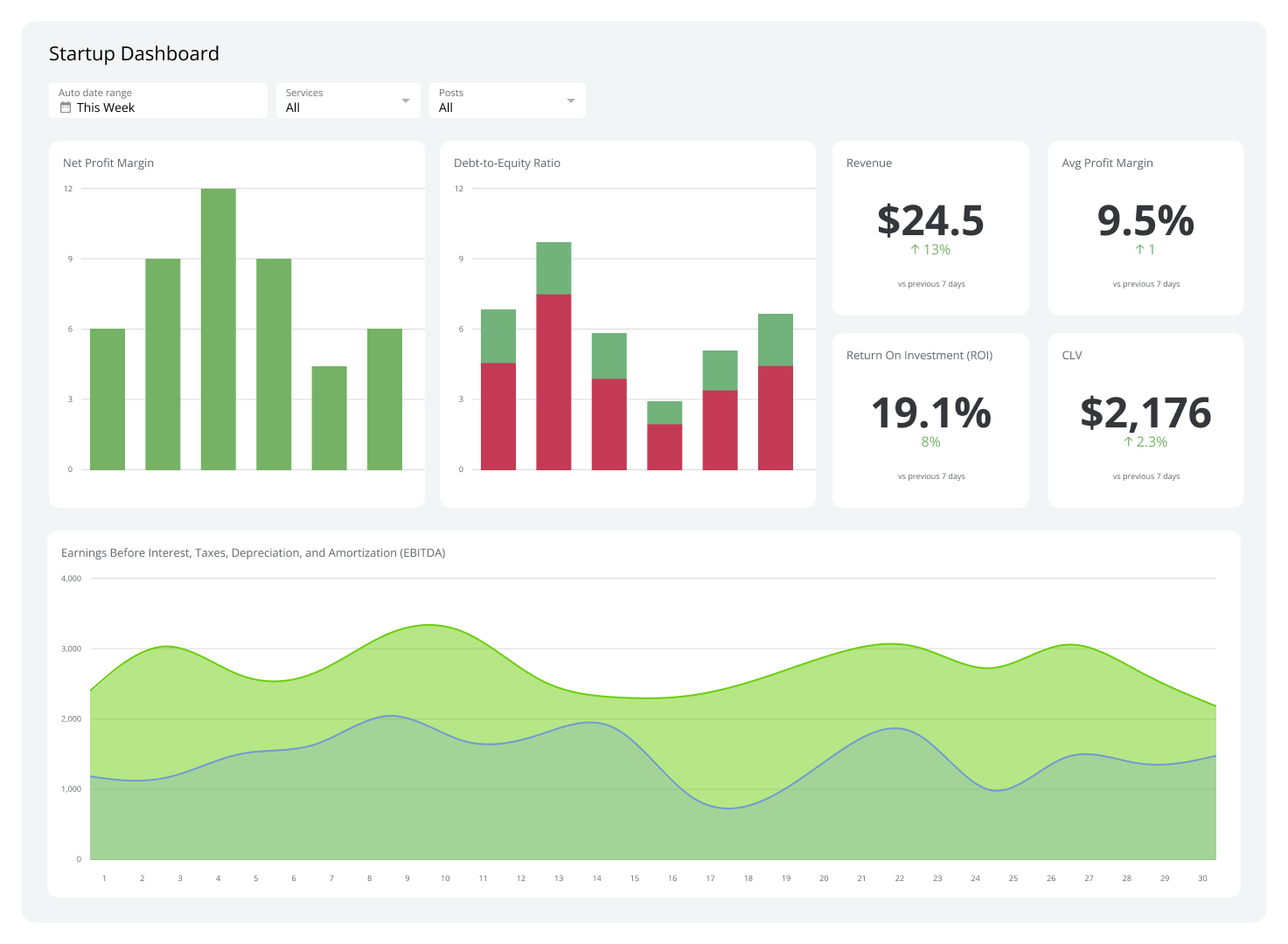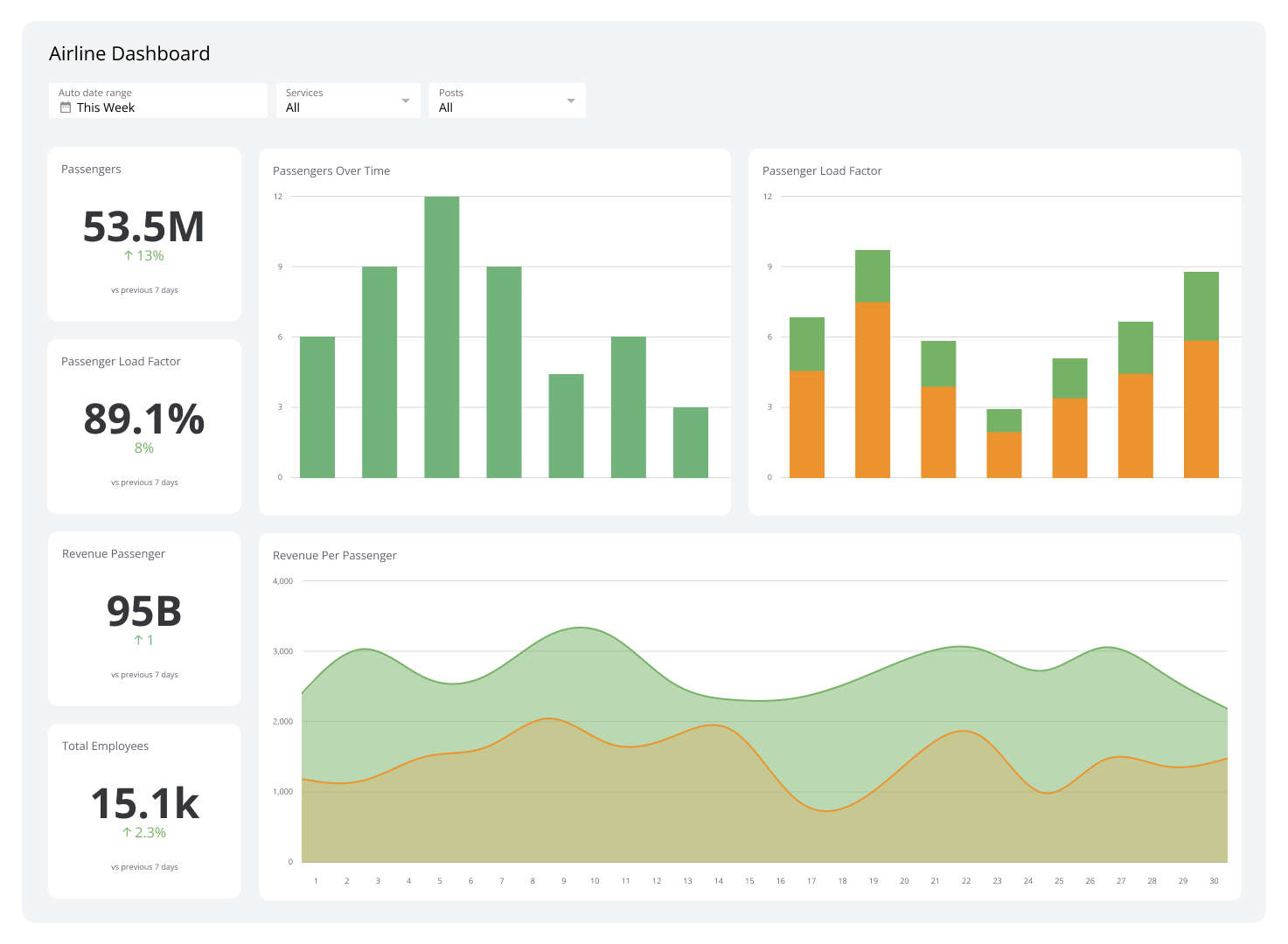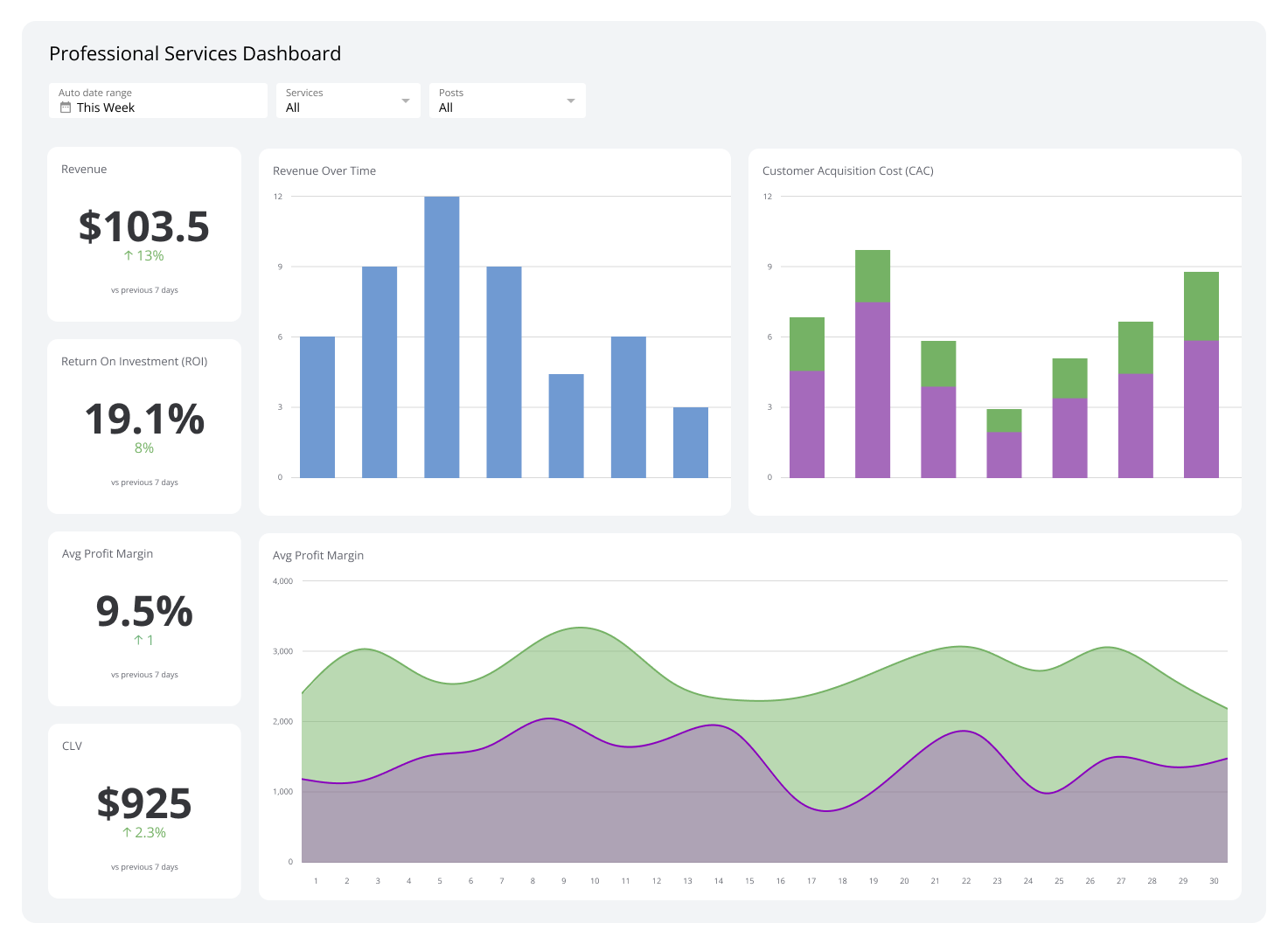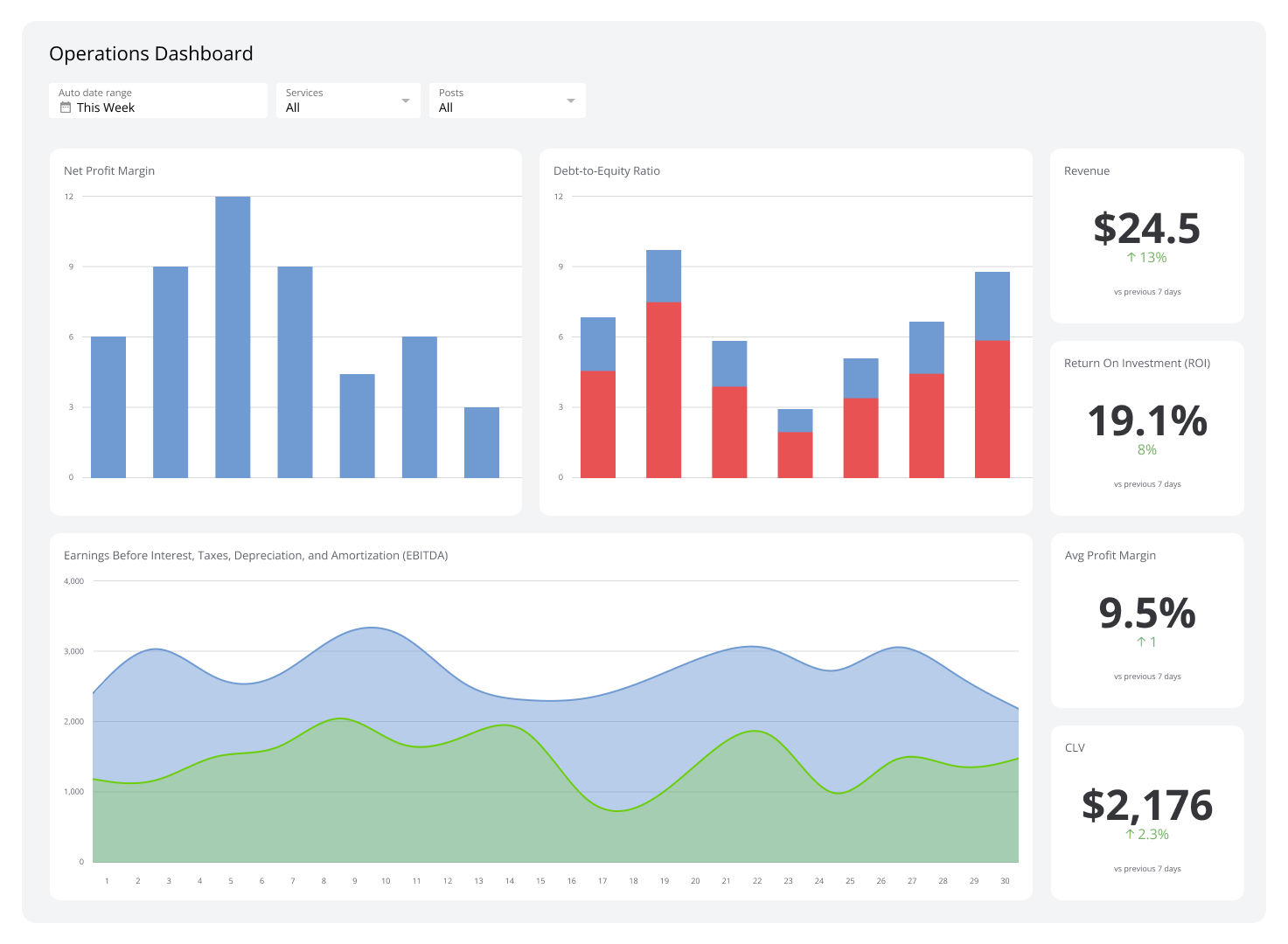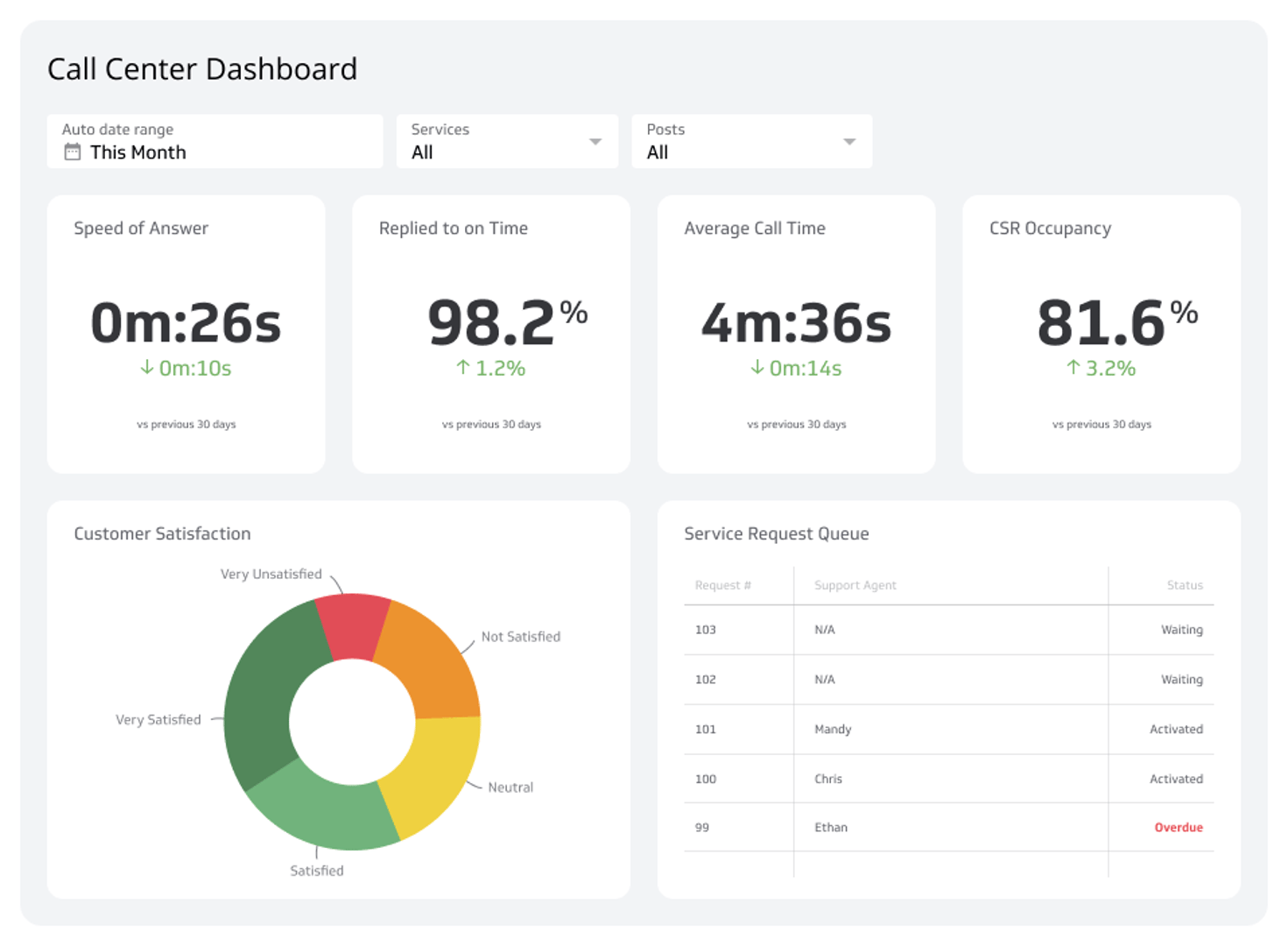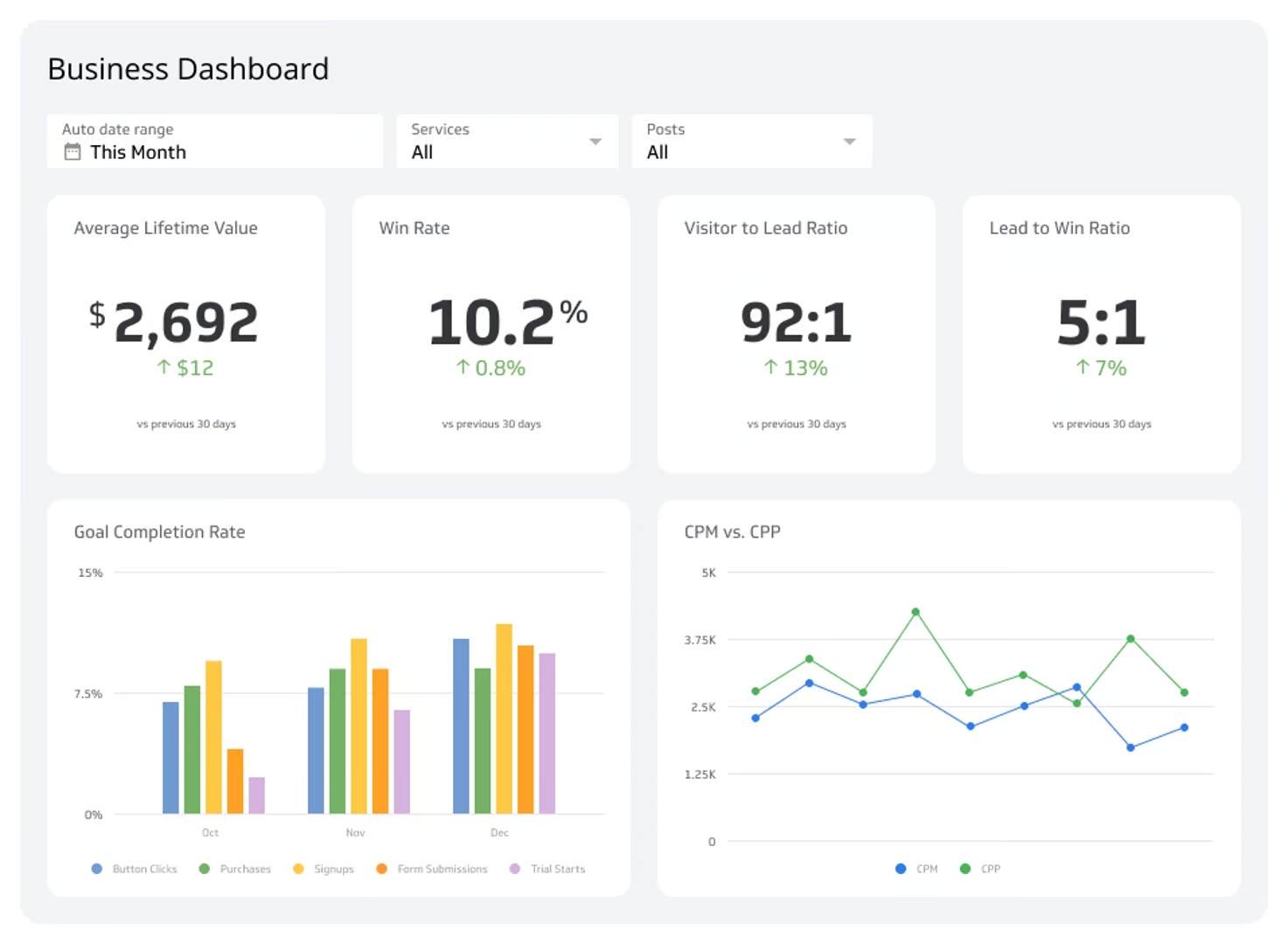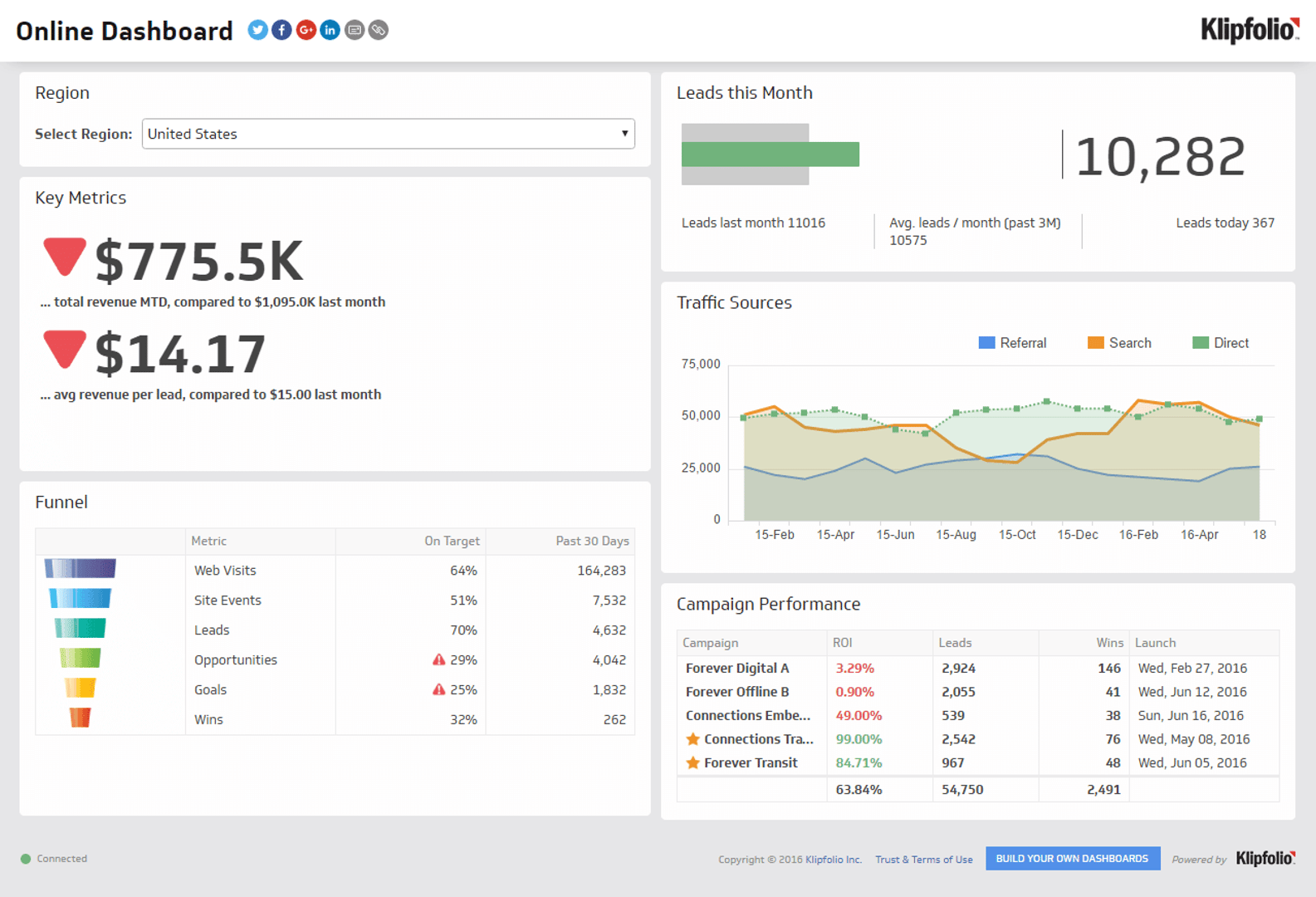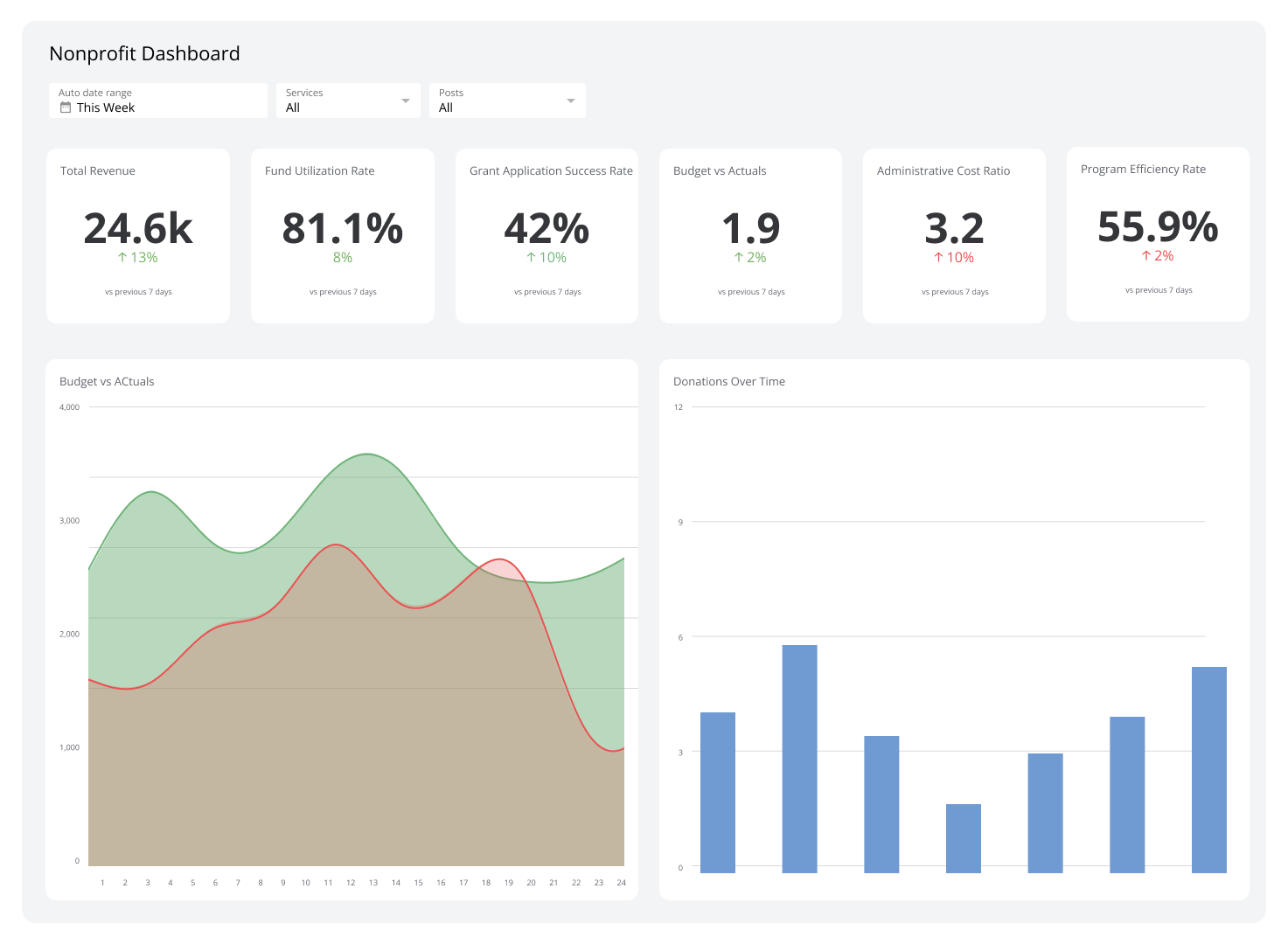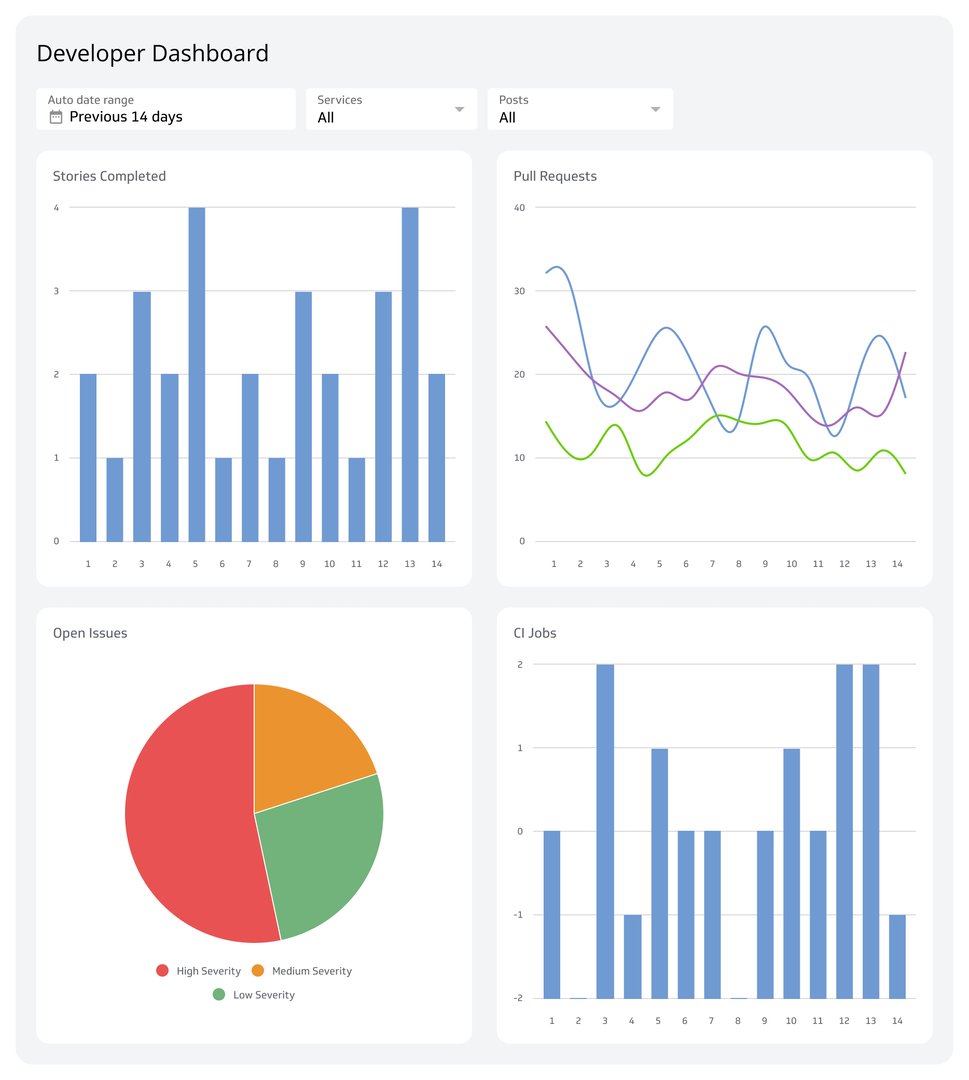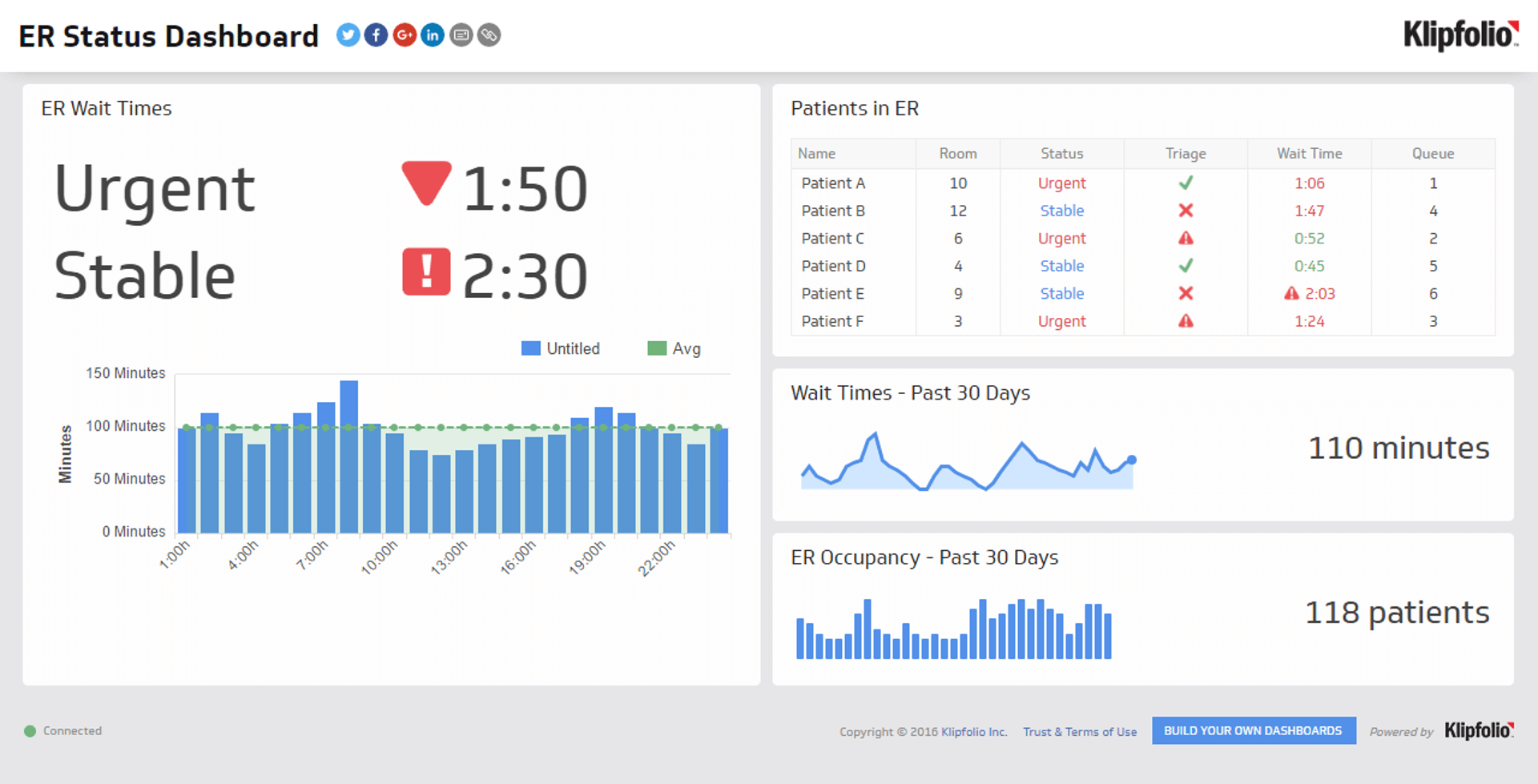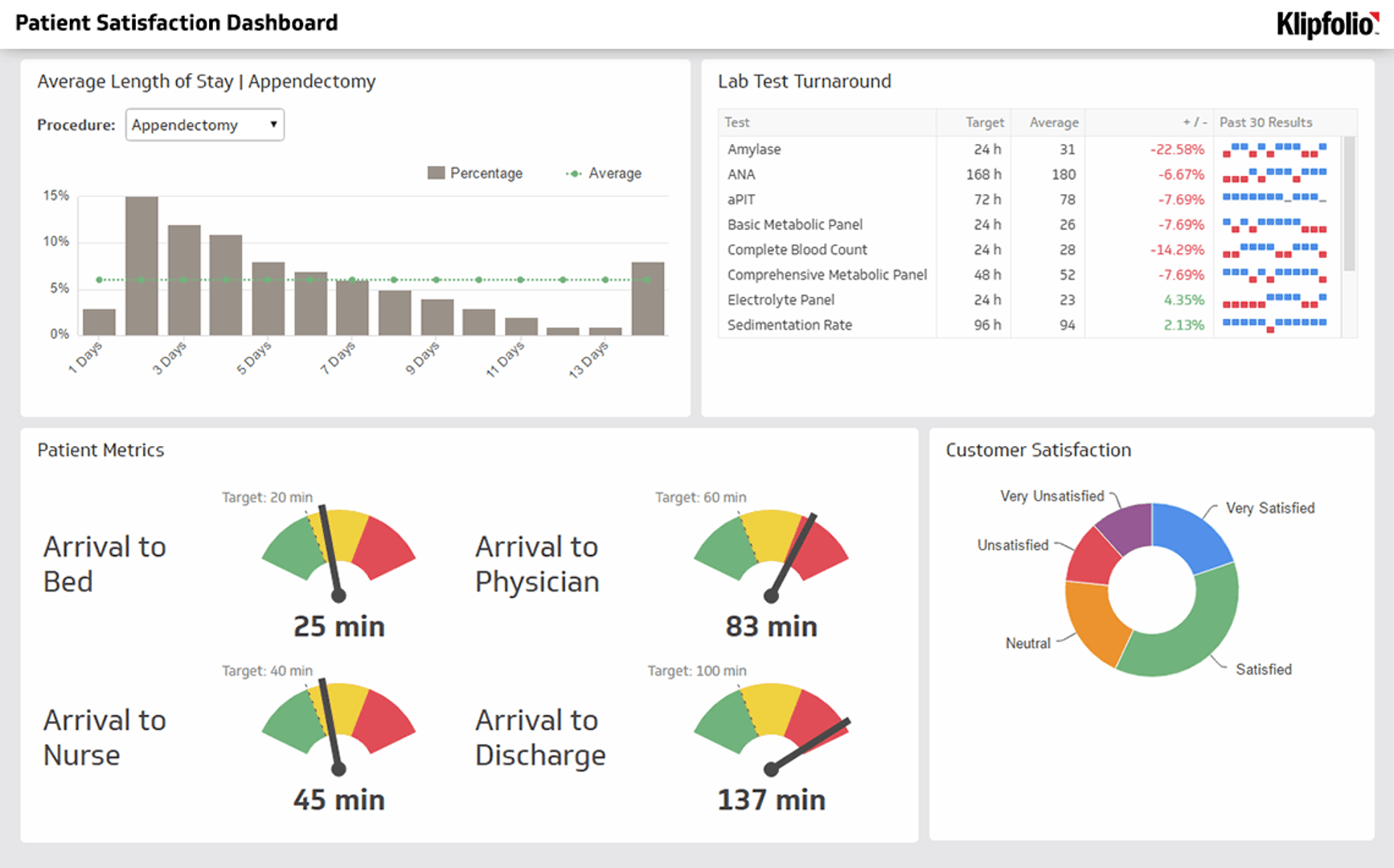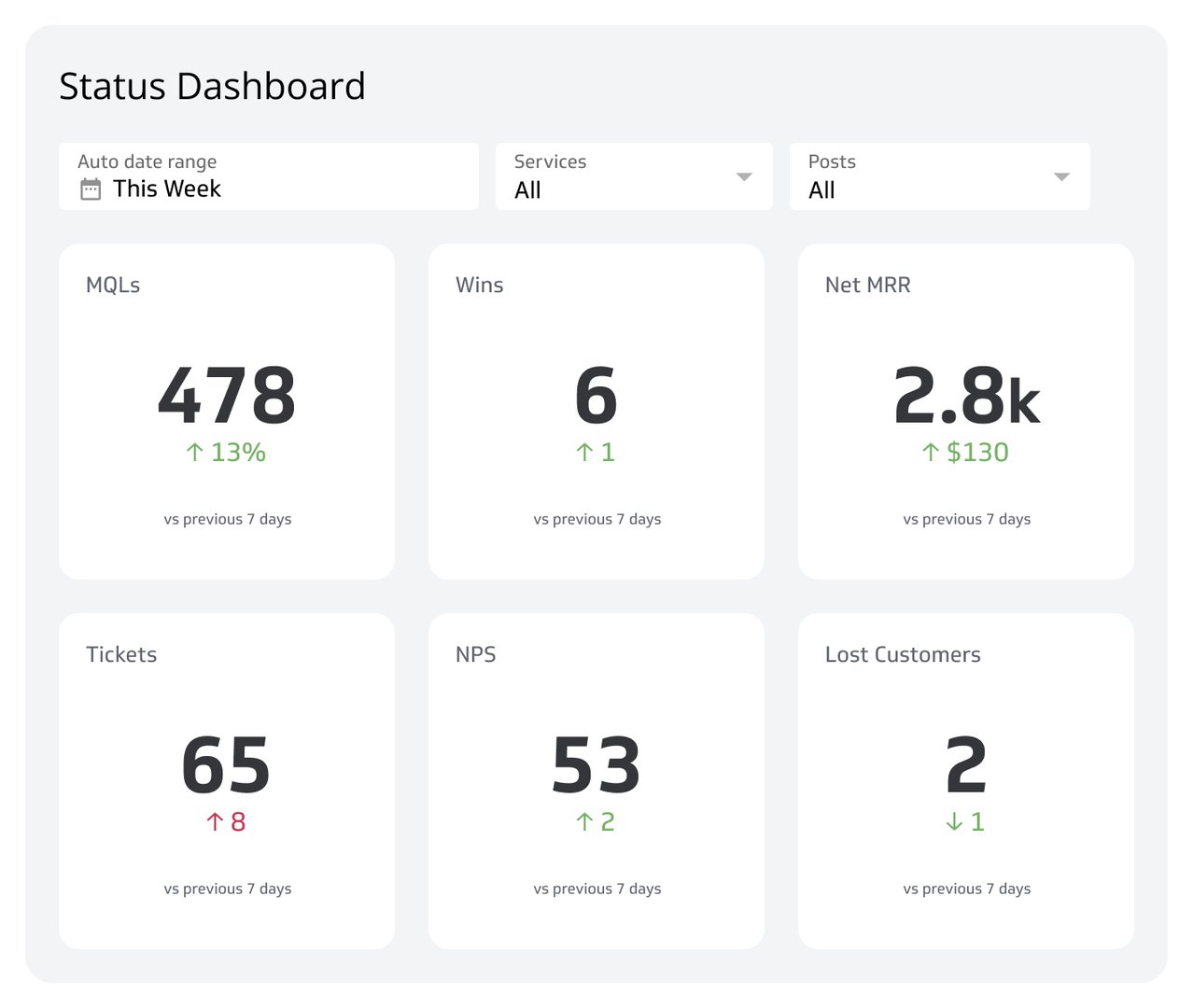Business Dashboards
Business dashboards help you monitor your business's state by consolidating all related metrics and KPIs in easily understandable, interactive charts, graphs, and tables.
What is a Business Dashboard?
A business dashboard gathers information from numerous sources, such as data warehouses, published reports, web-based services, and artificial intelligence. This information is often fed to you in real time, meaning you can rapidly respond to trends, market shifts, and issues regarding team or individual performance.
Getting regular updates from your business dashboard will help you acquire a dynamic view of your business landscape. For instance, viewing real-time sales figures enables you to acknowledge demand spikes, what is driving these spikes, and which of your offerings is selling the most.
Knowing this, you can make changes like expanding inventory before seasonal demand increases, ensuring you won’t run out of stock and lose buyers to your competitors in the marketplace.
Business Dashboard Examples
View all dashboard examplesAcquire Key Business Data Without Difficulty
Business dashboards give you an overview of the health of your business by displaying vital metrics and KPIs in one intuitive platform. Analyzing lets you better understand the inner workings of your company, spot trends, reduce costs, and come up with informed decisions that lead to growth.
Klipfolio’s customizable dashboards can help you streamline the business data acquisition process. Find out by trying it for free today!

